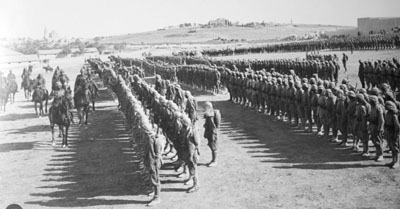Intermediate Reading Course. Section 1: The Basics
Recognizing Modes of Organization When Reading
Course Navigation
Organizing Ideas
As we saw previously, writers use different modes of writing depending on the central idea they want to communicate. For example, they use the narrative mode to tell a story or the expository mode to inform about a topic. Regardless which mode they use, they still organize their ideas so that the information is clear to their readers.

Anete Lusina | Pexels
The Best Way to Organize Information
There is no “best way” to organize information because it depends on the information itself. The list below shows the type of information and how you would likely want to organize it:
- to write about how to do something, you will likely go over the steps in the process;
- to write about different types of something, you will likely list the types;
- to write showing how to things are different, you will want to contrast them;
- to write a story, you will want to explain the sequence of events;
- to write explaining what something means, you will want to define it;
- and so on…
Organizing Information in Paragraphs
Below are examples showing different types of organization in paragraphs: cause-effect, classification or division (categories), example or illustration, listing, problem-solution, steps in a process, time order (chronological order).
Disclaimer. The paragraphs below are written to provide examples only. For more in-depth, accurate information on any of the topics, you should do further research.
Cause-effect paragraph
Sunburn is caused by ultraviolet (UV) radiation from the sun. When you are exposed to sunlight, UV radiation penetrates the inner layers of the skin, which leads to redness, pain, and blistering. Cumulative exposure to UV radiation damages your DNA, which can cause skin cells to malfunction and lead to skin cancer.
Main idea: Sunburn is caused by ultraviolet (UV) radiation from the sun.
To write about this idea, the writer presented the cause of sunburn and explain the effect.
Classification or division paragraph
UV radiation is divided into three types: UVA, UVB, and UVC. UVA radiation is responsible for tanning, but it can also contribute to the development of skin cancer. UVB radiation is responsible for burning and is the main cause of sunburn. Moderate exposure to UVB is beneficial as it triggers a reaction in the body that produces vitamin D. UVC radiation is absorbed by the ozone layer and does not reach the Earth's surface.
Main idea: UV radiation is divided into three types: UVA, UVB, and UVC.
To write about this idea, the writer presented and discussed each type of UV radiation.
Example or illustration paragraph
Depending on the culture, certain colors are associated with emotional states in people. For example, a graphic designer would likely use red to evoke feelings of passion, love, and energy. Blue is often associated with a sense of calm, trust, and stability, though it may also evoke a sense of sadness. Another example is the color white. It is no wonder it is used in weddings as it is associated with purity and innocence.
Main idea: Certain colors are associated with emotional states in people.
To write about this idea, the writer gave examples of colors their associated emotions. The writer also illustrated how people use this perception of certain colors (in graphic design and in clothing).
Listing paragraph
Overachievers are individuals who consistently perform at a level that is higher than what is expected of them. They are often highly motivated and ambitious, and have a strong desire to succeed in their chosen field. Overachievers tend to set high standards for themselves and are often perfectionists. They are not satisfied with average or mediocre results and are always striving to do their best. They also tend to be highly competitive, self-motivated, and self-disciplined. Many are risk-takers, which can lead to problems when they do not assess the risk of failure properly due to their drive.
Main idea: Overachievers are associated with a number of characteristics.
Although the first sentence is a definition, as a whole the paragraph is organized as a list of characteristics.
Problem-solution paragraph
Sitting at a desk for prolonged periods of time can cause a number of health problems. Sitting for long periods can put stress on the neck, shoulders, back, and hips, leading to pain and discomfort. It can reduce blood flow to the legs and feet, leading to varicose veins, swelling, and an increased risk of deep vein thrombosis. It can also cause weight gain, increased risk of heart disease, and poor posture. However, you can reduce health risks associated with sitting at a desk for long periods. Stand up and move around every 30 minutes to an hour. Take short walks during the day. Stretch or do simple exercises, such as neck or back stretches, to help relieve tension and improve posture. Finally, make sure your chair and desk are set up ergonomically to promote good posture.
Main idea: Sitting at a desk for prolonges periods of time can cause a number of health problems; however, you can reduced heath risks.
Mode of organization: Problem-solution.
To write about this idea, the writer explains the problem health problems caused by sitting at a desk for a long time and presents solutions to minimize the problem.
Steps-in-a-process paragraph
Washing your hands is an effective way to get rid of disease-causing germs. As simple as washing your hands may seem, many people do not do it properly. First, wet your hands with clean, running water (warm or cold), turn off the tap, and apply soap. Then rub your hands together to lather your hands. Be sure to lather the backs of your hands, between your fingers, and under your nails. Make sure to scrub your hands for at least 20 seconds. Next, rinse your hands well under clean, running water. Finally, dry your hands using a clean towel or air dry them.
Main idea: Follow these five steps to wash your hands properly.
To write about this idea, the writer explained the steps you should follow to wash your hands properly.
Time order (chronological order)
After World War I in 1918, the victorious Allied powers imposed harsh terms on Germany in the Treaty of Versailles, which left Germany with a sense of resentment and a desire for revenge. In the 1920s and 1930s, fascist regimes came to power in several European countries, including Italy and Germany. These regimes promoted aggressive nationalism ideologies and expansionist policies. In addition, many European leaders believed that the best way to avoid another war was through appeasement, which involved making concessions to aggressive nations in the 1930s. However, this policy ultimately failed as Hitler and other fascist leaders continued to make aggressive demands and expand their territories. Led by Hitler, Germany invaded Poland on September 1, 1939. This led to a general mobilization of all European countries. The invasion of Poland was the trigger for the United Kingdom and France to declare war on Germany, which in turn led to the start of World War II.

Main idea: A series of historical events led to the outbreak of World War II on September 1, 1939.
To write about this idea, the writer presents the sequence of events in chronological order, or time order, between 1918 and the start of the war in 1939.
Why Is This Important?
Recognizing how a paragraph is organized helps you focus your attention on the details, which improves comprehension. For example, if you notice a cause-effect paragraph, you should pay attention to the cause and the effect. If a paragraph is organized as a list, you should focus on the items on that list.
Up Next: Differences between Print and Online Texts
Go to the next lesson to learn about differences between print and digital publications.